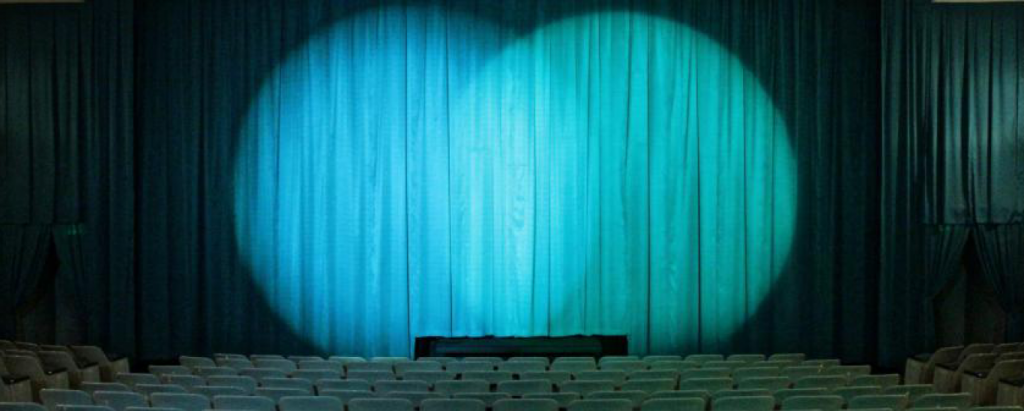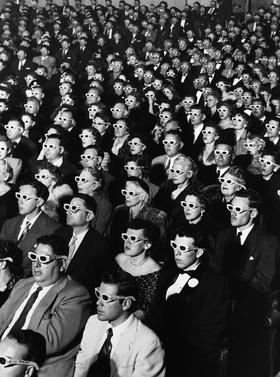 (This is a three-part-series. Part 1 ran yesterday and Part 3 runs the day after tomorrow. )
(This is a three-part-series. Part 1 ran yesterday and Part 3 runs the day after tomorrow. )
The show will go on for South Florida theater, but 2021-2022 will be a season of asterisks, what ifs and when. In this three-part series, Florida Theater On Stage talks to a dozen artistic directors and managing directors in detail about a raft of reasons why this season will be unlike any other: among them, coping with the mutating COVID, addressing diversity issues, wooing nervous subscribers, even the skyrocketing cost of lumber needed for sets. While local theaters survived the past 17 months as peers around the country have shuttered, the coming season may determine whether every Florida company will still be here a year from now. Yesterday in part one, they spoke about how the immediate challenges such as dealing with COVID.
By Bill Hirschman
Promises, Promises: Dealing with Diversity and Rebuilding Audiences
Ramping up this season includes dealing with concerns raised more than a year ago about equity, diversity and inclusion that encompass casting, title choices, thoughtless things said during rehearsals and a disconnect from the diverse communities the companies presumably serve.
Over the past year, numerous artistic directors, producers and artists have spent considerable time in informal conference calls and in consciousness-raising seminars sponsored by the South Florida Theatre League and the Florida Professional Theatres Association.
That led to some changes: For instance, Palm Beach Dramaworks in particular sponsored online programs focusing on diverse playwrights like August Wilson, and sponsored readings of works by Nilo Cruz and Lynn Nottage whose Intimate Apparel is part of the coming season.
Some are trying to target a more diverse community with in-person visits to groups. In a meeting with Palm Beach County’s Guatemalan community, the Maltz Jupiter Theatre’s Producing Artistic Director Andrew Kato was told that, more than a production in Spanish, residents sought help in producing a talent show. He mentioned sheepishly that he has never done a gay-themed show at the Maltz or met with a gay group even though he is member of the gay community.
Actors’ Playhouse in Coral Gables plans to significantly ramp up its advertising this winter for its major production of On Your Feet, the musical about Gloria and Emilio Estefan. Much of it will be on radio stations where potential new Latinx audience members spend time.
What is missing is any overwhelming uptick in specific shows focusing on diverse lives and cultures beyond the normal number that have always occurred annually in the region. Still, Island City Stage in Wilton Manors, which just completed a season, produced the race-conscious The Niceties last April and has slated One In Two for next summer by the acclaimed outspoken playwright Donja R. Love described as “an unflinching portrait of being Black and gay in America today.”
The most visible change likely will be in non-traditional casting. Already, some calls for auditions have pointedly noted that race is not a factor or, in the case of the Maltz’s Sweet Charity, that applicants for the titular lead should be Latina.
At Slow Burn Theatre in Fort Lauderdale, “my biggest focus has been on… making sure that I have the best and the most diverse cast I can possibly have,” Patrick Fitzwater, artistic director, said. “It’s really easy to fall back into your norm, but it’s really looking at branching out and looking outside of my own circle. I’m meeting new people, meeting new designers, using Facebook and trying to build up a Rolodex of strangers that I haven’t worked with.”
But some leaders believe that the most crucial changes needed involve profound rethinking in philosophy and the approach to how business is generally done.
Part of “our (stated company) mission is to educate, entertain and inspire,” Kato said. “But what I’ve learned is the most important word of our mission is the final two words: our community. And what does that mean? So establishing and beginning dialogue, creating opportunity, diversifying your staff as we make rehires, making sure that we have that filter. Are we creating opportunities for everyone, diversifying our board, creating opportunities for new voices? It’s going to be a filter that every question that gets asked will have that attached to it.”
He has used the highly-publicized “We See You White American Theater” national protest letter from June 2020 as a guide to creating objectives for the theater long-term. But he said, “part of the whole conversation is that you don’t just check boxes…. It’s got to be organic. There’s a whole layer of understanding that you have to grasp before you can do the kind of extensive work (needed because)… the culture of an organization takes time to change. And so you just have to take a step and another step and another and be proactive.”
Island City Stage’s Artistic Director Andy Rogow echoed, “It’s not going to change so much what we program as looking to see how we make it more comfortable to either be an artist in our theater or a patron. How do we make more people feel welcome and comfortable and (prove) we’re telling their story?”
 A parallel set of internal changes – ones patrons will not see – were prompted in part by the simmering anger that artists expressed during the height of the pandemic about the unusually stressful working conditions during the concentrated to-brief rehearsal periods.
A parallel set of internal changes – ones patrons will not see – were prompted in part by the simmering anger that artists expressed during the height of the pandemic about the unusually stressful working conditions during the concentrated to-brief rehearsal periods.
For instance, Zoetic Stage in Miami and Theatre Lab in Boca Raton currently plan to cut back from the six and seven days a week schedule to five days, and eliminate the punishing “10 of 12” rehearsals. That’s a noon to midnight stretch with a two-hour lunch break as the technical crew painstakingly works out the moment-by-moment lighting and sound set ups, adjustments and cues. Some companies also are creating a clear process for registering complaints about physical treatment, sexual improprieties and racial micro-aggressions.
In a measure primarily used by the Wick Theatre in Boca Raton in recent seasons, Slow Burn plans to hire understudies, in part so that if COVID or any other serious sickness sidelines an actor, the run of the show can continue without an actor working while ill — a sacrifice that has been unofficially “encouraged” for a century.
Participation will be far from universal. Such steps add significant cost that some companies find prohibitive.
An even more nagging question, some veterans wonder, is whether any of the changes will last more than a year or two, or even whether the plethora of pledges for reforms over the past year will actually be carried out.
“So I think a lot of promises were made by theaters (about) some of the troubling things that have gone on in our industry that we just kind of have either turned a blind eye to or weren’t aware of,” said Matt Stabile, producing artistic director of Theatre Lab, who held EDI training for his cast and crew during in the opening days of rehearsal last month.
“But I don’t hear a lot of talk about that anymore…. And I think so many people are (just) excited about the idea that theater is coming back. But I will remind everyone that there is this whole swath of our industry that doesn’t want theater to come back the way it was…. And so I hope that my colleagues are taking that as seriously as I hope that we are, because I don’t think it was simply a flash moment. I think it was a sea change of how this industry needs to operate going forward.”
Curtain Up
The uncertainty extends even to when the curtain will rise at each venue. For decades, most South Florida theaters normally opened their season about the same time: a little before the snowbirds arrived and ended a little after they left. That paradigm ended years ago and now some theaters operate year-round. But the wide array of factors during the past year and a half has created a mélange of opening dates.
For instance, Island City went dark for seven months after the initial shut-down in March 2020. Then, after months of working out a variety of plans and budgets, it resumed its season with live in-person productions this year in February, April and June.
The Broward Center has hosted some events in its smaller Amaturo Theater and outdoor spaces since November 2020 and has been busy finishing the overhaul of the Parker Playhouse for a reopening this month.
Main Street Players in Miami Lakes opened in July. Theater Lab opened its season this month. Zoetic Stage and Slow Burn plan their bow in October. GableStage reopens in November. The Maltz Jupiter Theatre will celebrate the first show inside its multi-million-dollar building expansion in January. And The Wick Theatre was only closed a few months in 2020 before producing a parade of cabaret evenings and then a full-fledged A Chorus Line last April.
Is anybody there? Does anybody care?
Obviously, a key facet in the future of the coming season — something that companies have been working on for months – is keeping subscribers and finding new ones.
Much of the efforts of companies for most of the pandemic-to-date has been keeping a connection with existing patrons. Miami New Drama conducted dozens of online seminars. Dramaworks produced a score of staged readings online as well as filming a new fully-realized production of The Belle of Amherst coproduced by Actors’ Playhouse available on video only. Virtually everyone peppered their subscribers’ emails with monthly and even weekly updates.
The efforts—most of which never came close to making back their production costs – were laser-focused on reminding current and future customers that the companies were still vibrant, operational and a legitimate place to subscribe. Artistic directors feared that veteran subscribers might balk because of memories of the venerable Caldwell Theatre and Florida Stage folding 10 years ago with thousands of paid subscriptions unsatisfied.
Worse, companies trying to budget for a season ahead faced growing decade-long trends that undercut guesstimating income for the season: Audience members impulse-buying days before a performance, or cherry-picking a show out of a season, as opposed to being season-long subscribers confident that the quality will be satisfying even if a specific title is not appealing.
So, currently, companies are offering a variety of subscription plans with “premium seating” and flexible pick four-out-of-five titles.
Bottom line: While many loyal patrons are returning and different companies are in different stages of their subscription drives, many customers are waiting and watching.
The Maltz, with one of the largest subscription audiences in the country for a regional theater, had 8,200 subscribers in the 2019-2020 season. So far, with the subscription process getting underway, it’s about 5,600.
Sales figures vary from company to company, Fitzwater said. “Our season tickets have been on sale and it’s not as good as it was, but it’s not as horrible as I thought it would be.”
Actors’ Playhouse’s Barbara Stein, executive producing director, was upfront: “I can’t say that we have tons of orders every day; they’re dribbling in…. People want to make sure they don’t lose their money.”
Zoetic’s Managing Director Michael McKeever is more optimistic: “Our audience… is very much looking to get back to start experiencing live theater again…. But people are a little shell shocked from the last two years, so it’s going to be interesting to see what happens when we get in that room with that first audience. I’m sure relief and exhilaration. But at the same time, there’s going to be a little trepidation as well, because we just don’t really know what to expect.”
The new villains in the play, of course, are the emergence of the Delta variant and the vocal cadre of Floridians opposed to getting a vaccine.
The resulting reticence to subscribe is a notable change from six months or more ago, when theaters’ surveys of their patrons showed one-third of their regular audience were willing to come back at that moment, and another third were receptive to trying a visit if conditions seemed safe.
But the subsequent fallout from Delta is clear in the latest national survey by the Audience Outlook Monitor. It measured a 20 percent decrease between July and August in patrons’ readiness to return to cultural events nationally. The proportion of “vaccinated but reluctant” respondents jumped from about a third of respondents in June to half of respondents in August. A major segment suggested they would not return until January. (The whole report is at https://www.audienceoutlookmonitor.com/)
 The good news is that theaters have heard throughout the pandemic that their core audience is ravenous to return as soon as health conditions allow. Indeed, audiences have joyfully attended outdoor productions by Slow Burn and City Theatre of Miami on plazas and parking lots this year. For months now, some have filled the tiny Foundry Theatre in Wilton Manors where producer-playwright-actor Ronnie Larsen has been mounting gay-themed plays.
The good news is that theaters have heard throughout the pandemic that their core audience is ravenous to return as soon as health conditions allow. Indeed, audiences have joyfully attended outdoor productions by Slow Burn and City Theatre of Miami on plazas and parking lots this year. For months now, some have filled the tiny Foundry Theatre in Wilton Manors where producer-playwright-actor Ronnie Larsen has been mounting gay-themed plays.
“They’re willing to come …. So you make it as safe an environment as you possibly can,” said Martin Childers, managing director of Island City Stage. “I think that in our new world, we’re going to have to always live with the possibility that you’re going to get COVID.”
Reconnecting with the old audience and building a new, albeit younger more diverse audience, is high on the ramping up to do list.
Before the pandemic, companies used snail mail, email and a bit of social media to spread word of their projects. During the pandemic, companies feared they would lose touch with their core audience; they learned to increase their emphasis on social media with ever more sophisticated outreach about their online productions and video classes.
But now, with some shows on the cusp of opening, companies like Slow Burn and Theatre Lab have ratcheted up their online campaigns with almost daily Facebook and Instagram posts about upcoming productions, such as items spotlighting individual actors, photo arrays of completed casting for future shows, and video clips of rehearsals.
(This is a three-part-series. Part 1 ran yesterday and Part 3 runs tomorrow.)








 A PaperStreet Web Design
A PaperStreet Web Design
